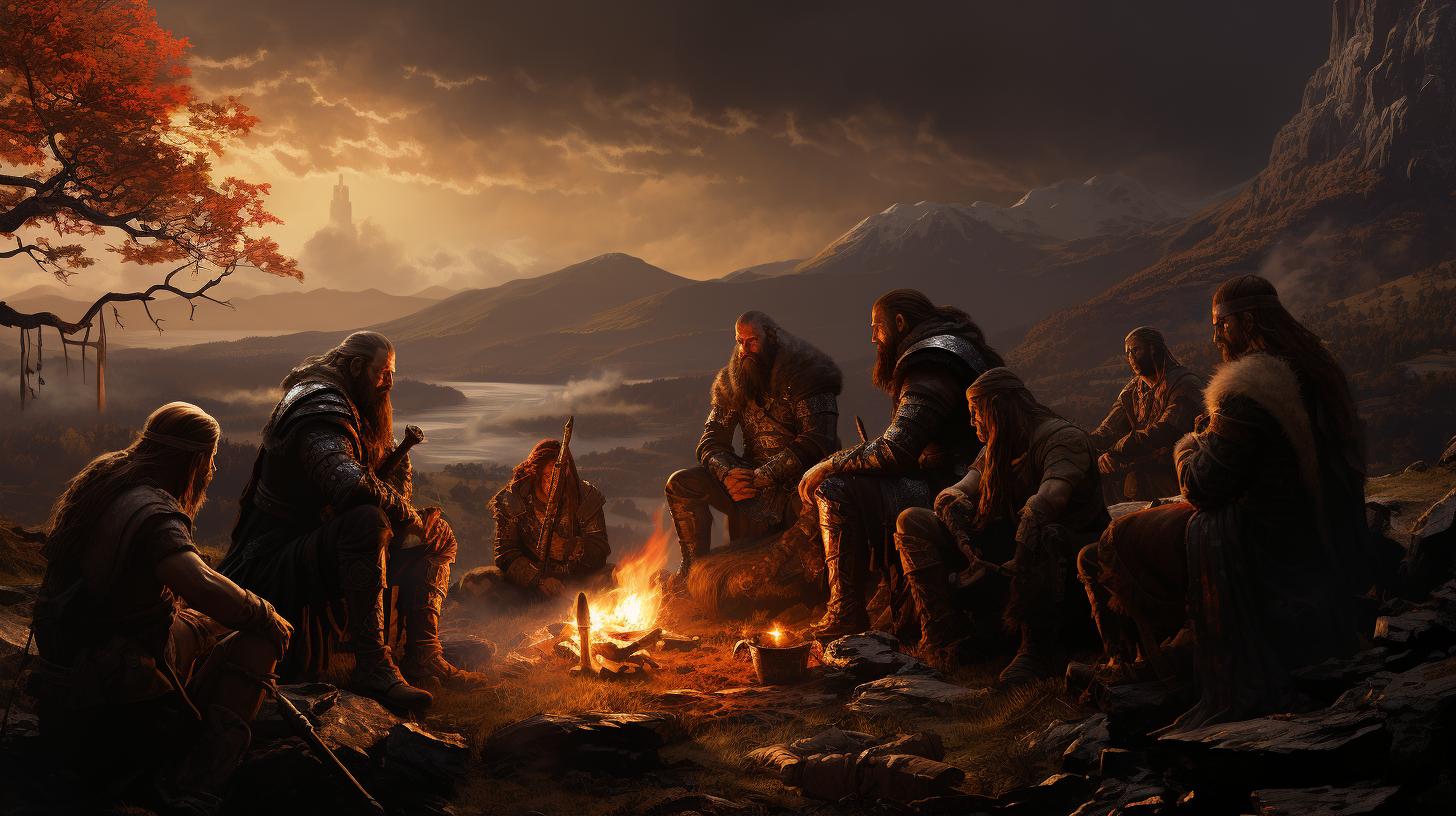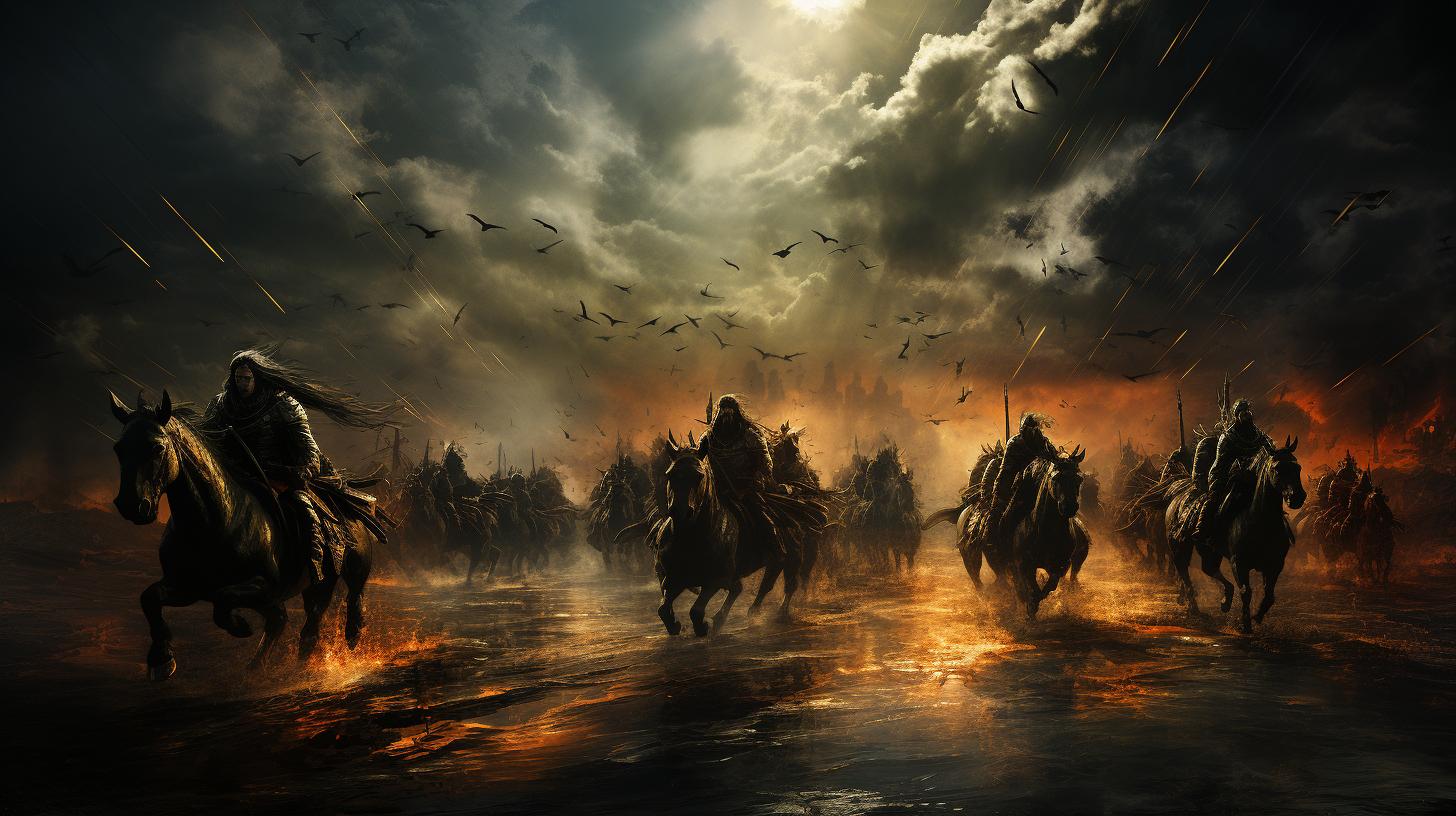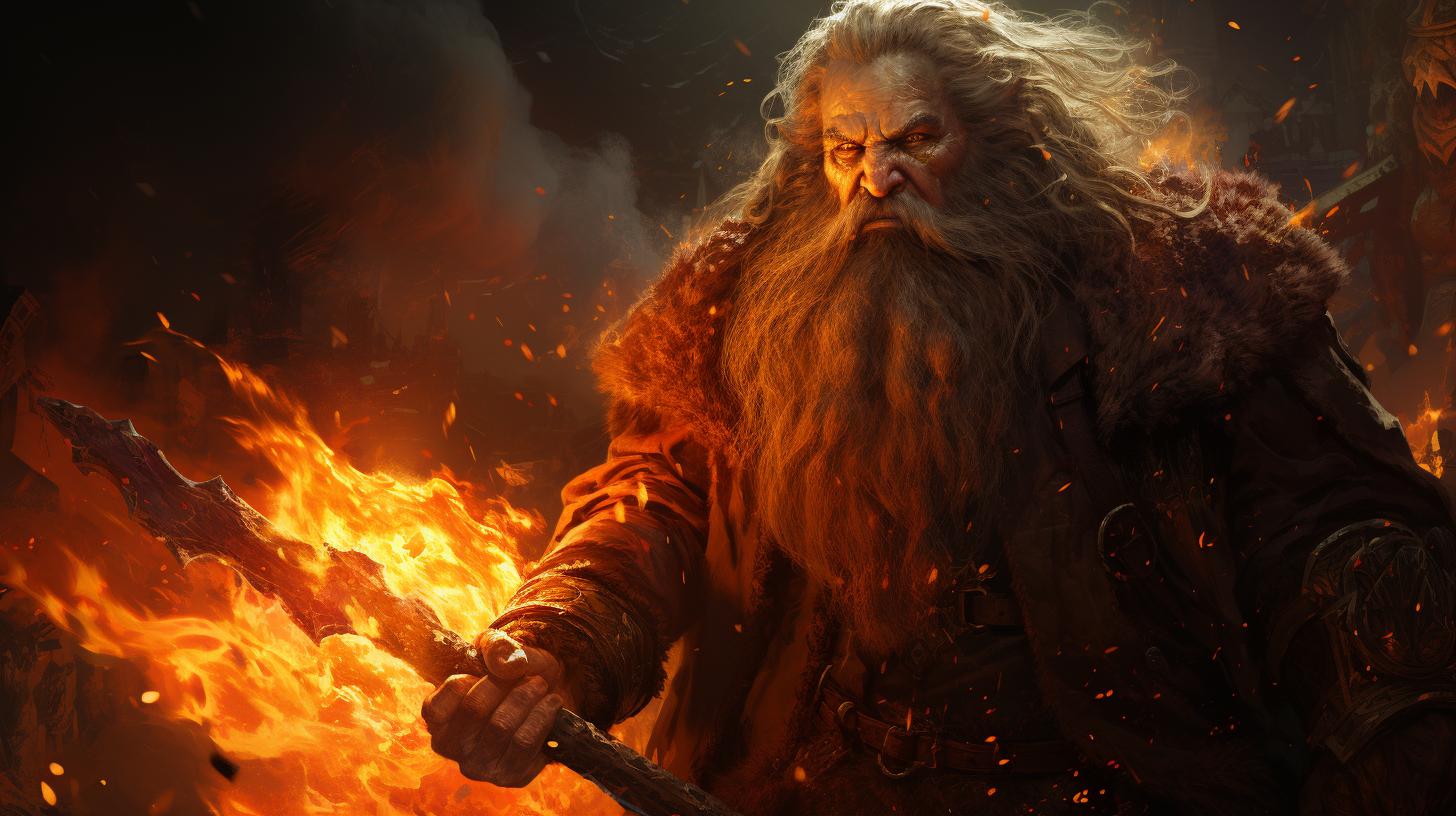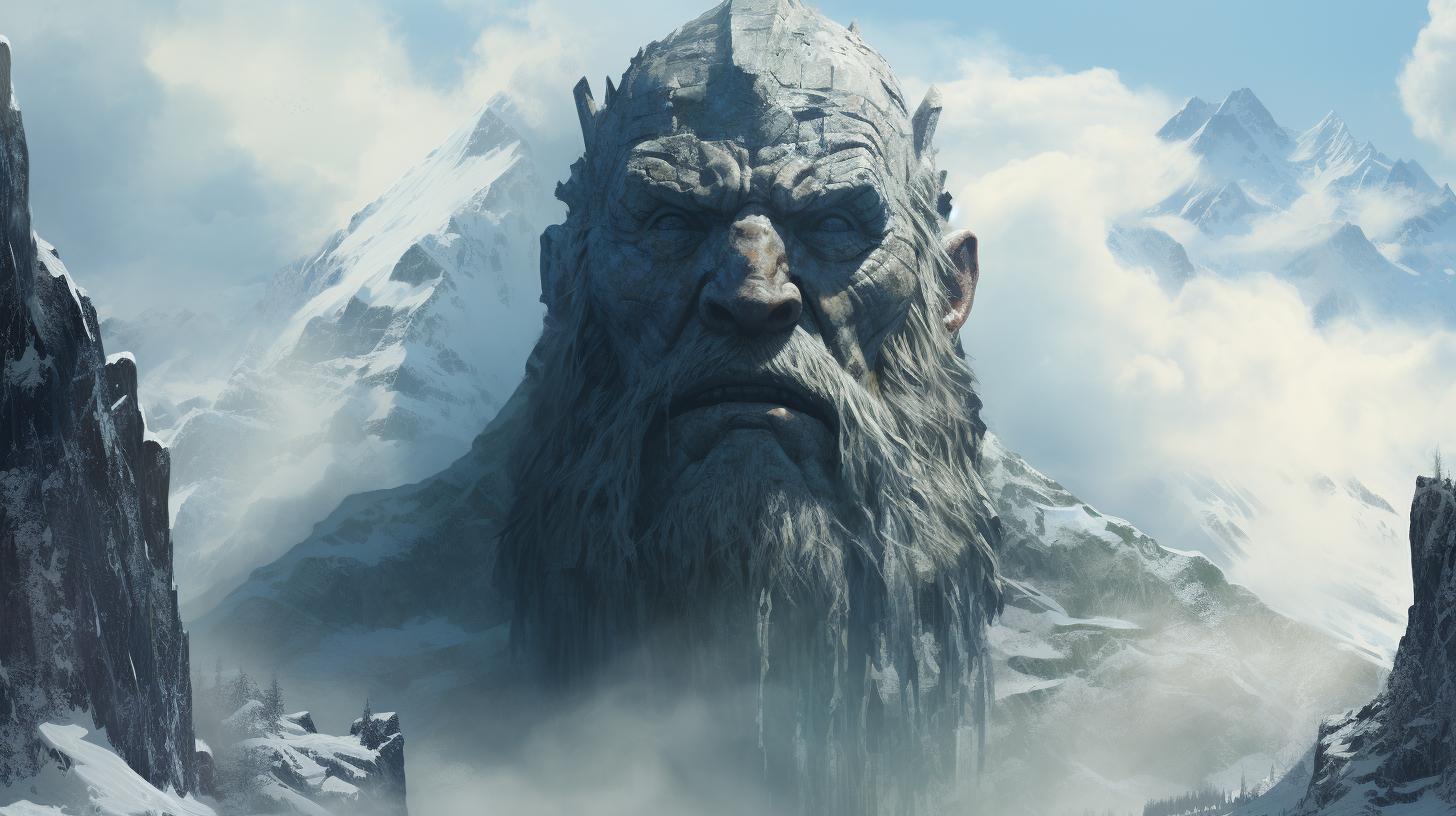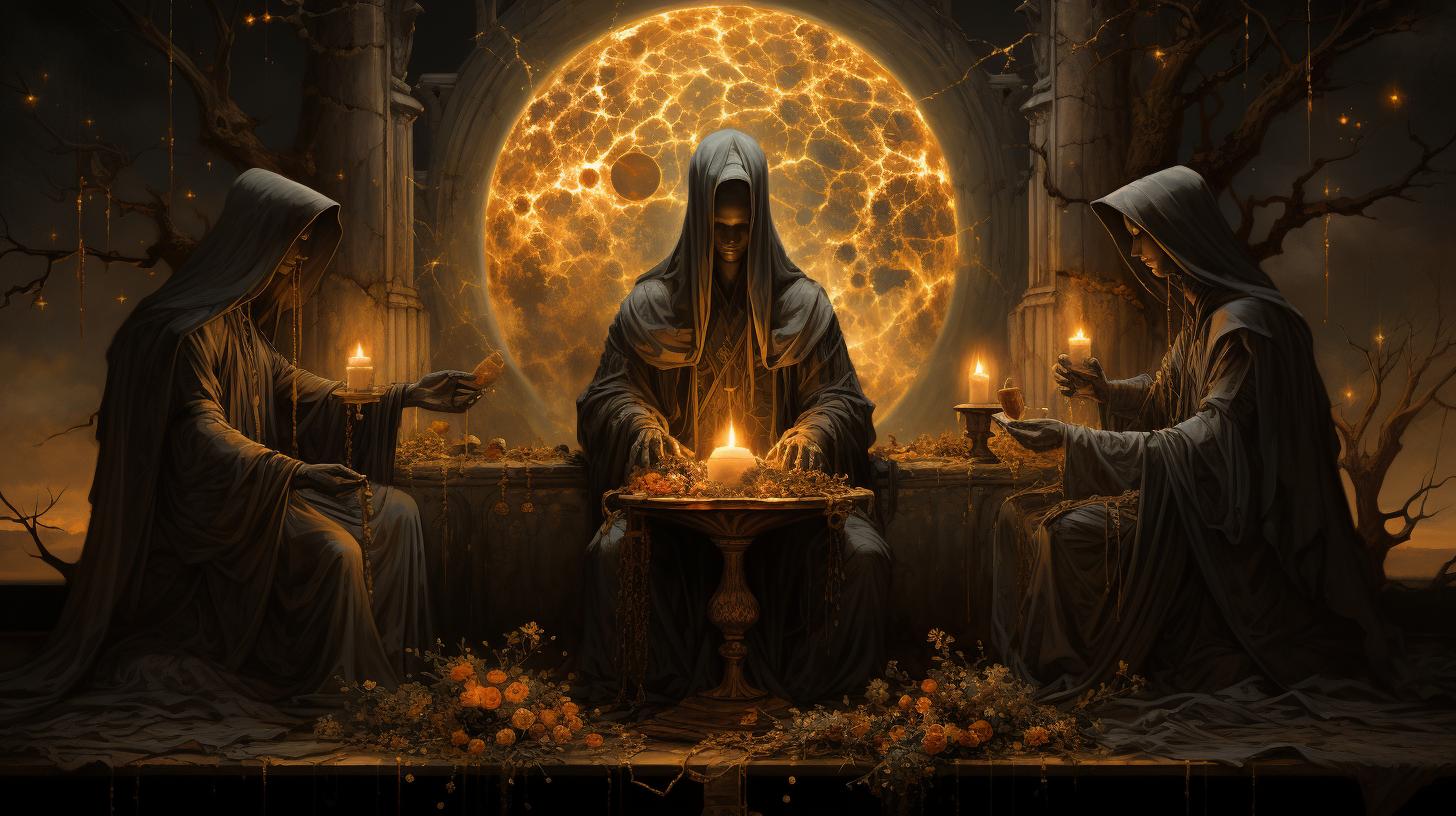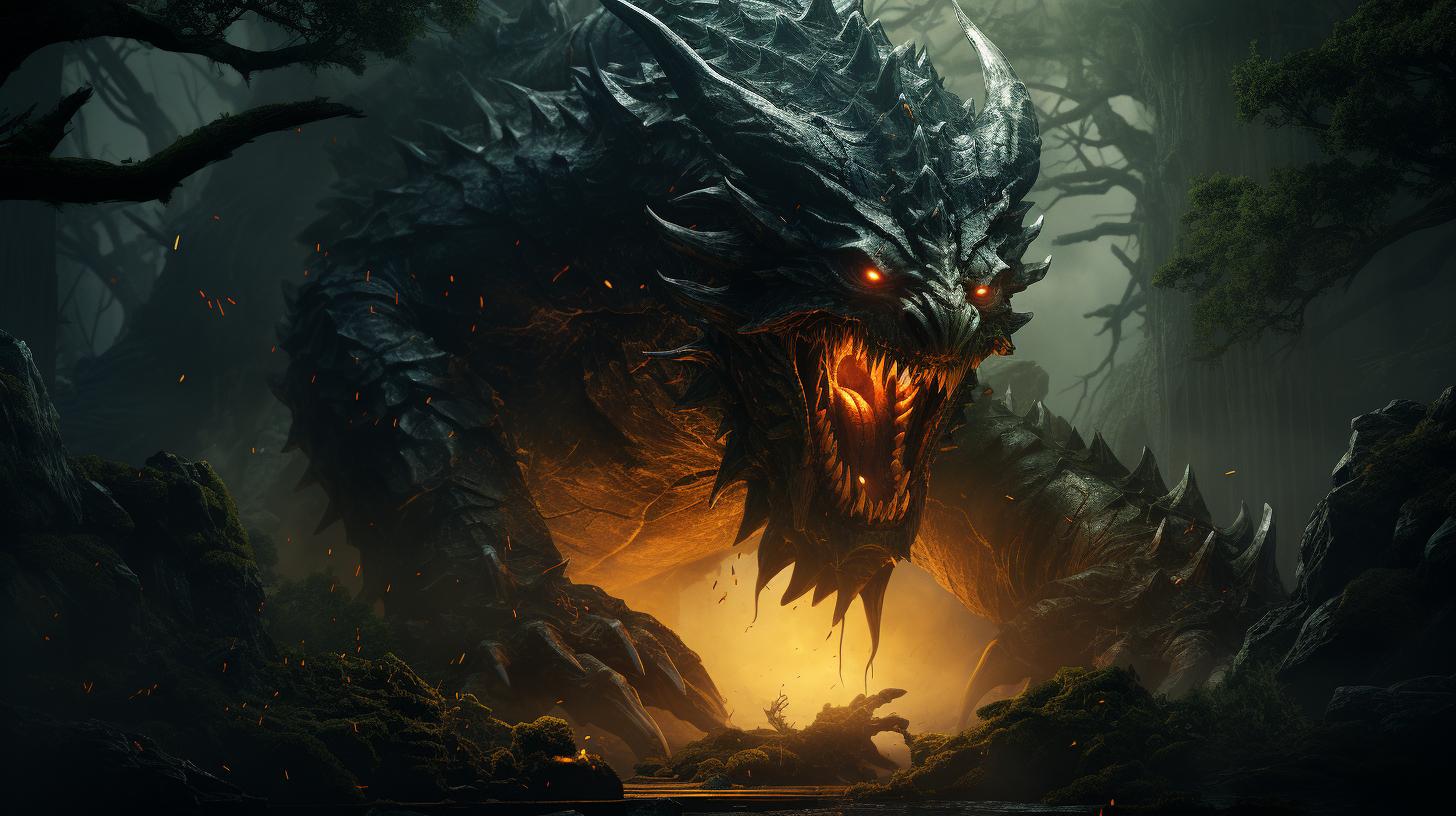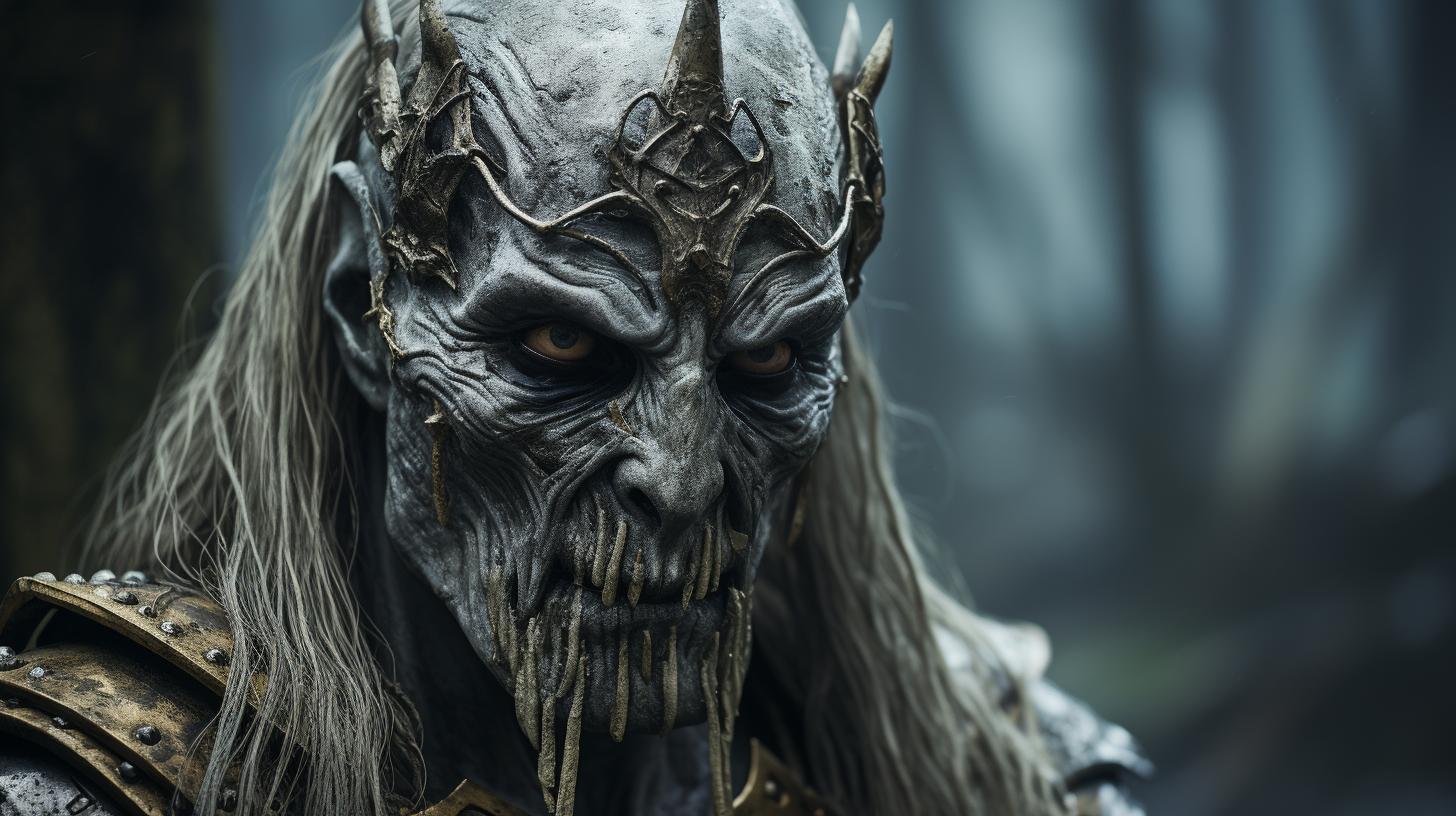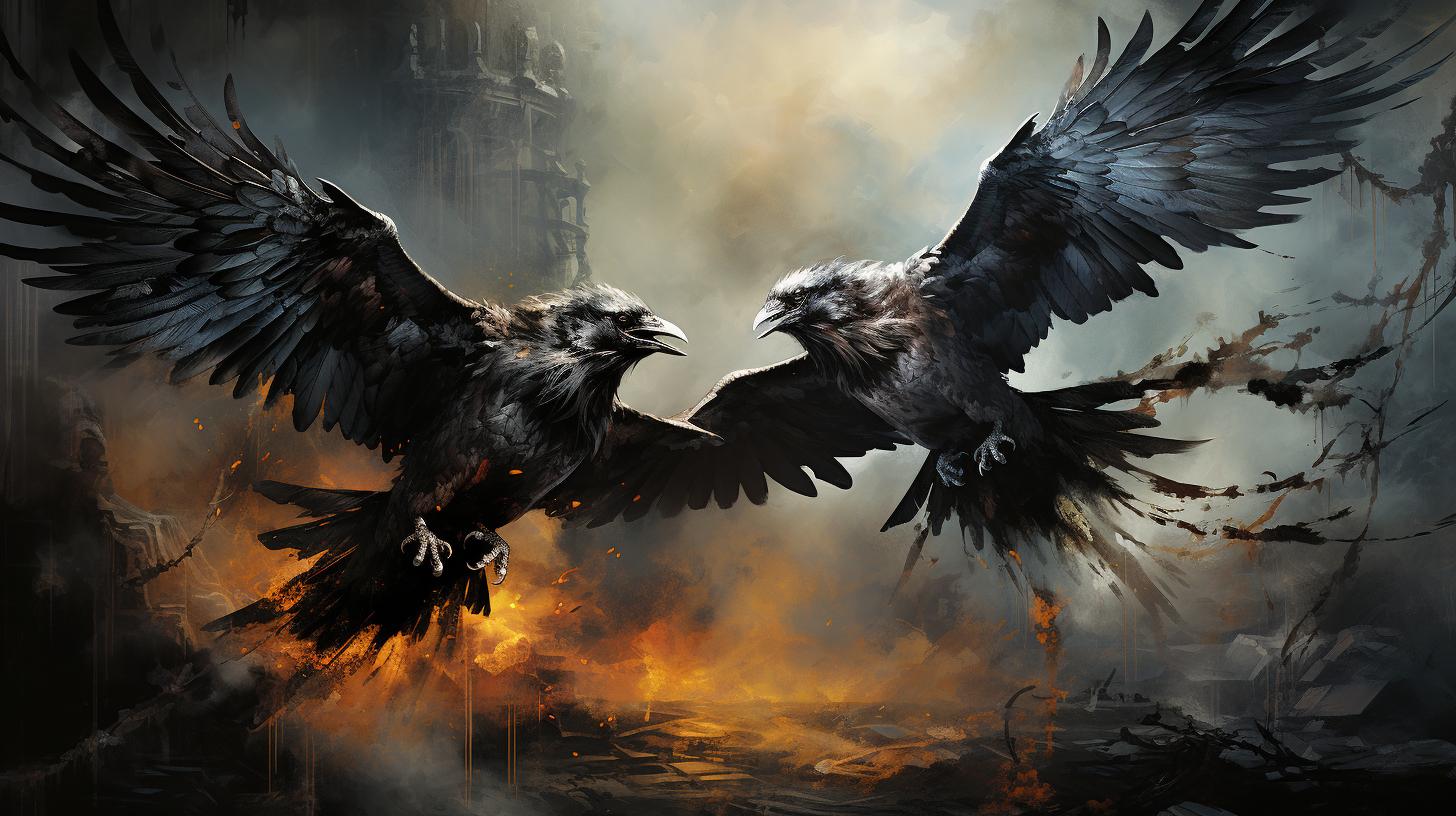Norse Mythology Einherjar: The Elite Warriors of Valhalla
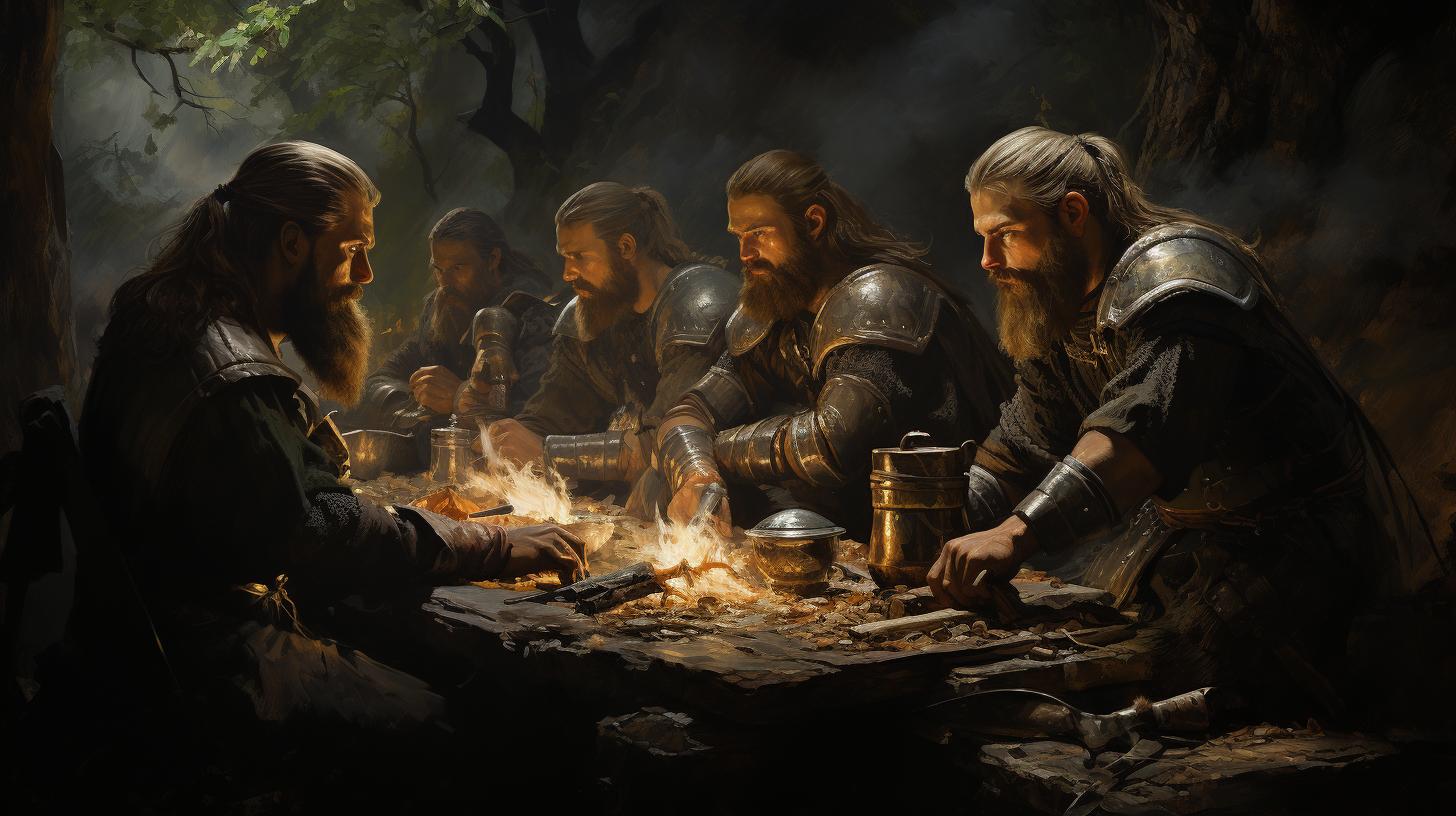
The Einherjar, elite warriors of Norse mythology, hold a significant role in the grand tapestry of Nordic legends. Chosen among the bravest warriors by the valkyries, they reside in Valhalla, Odin’s majestic hall.
Their existence is devoted to fierce battles during the day, with their wounds healed each night. Sustained by Saehrimnir’s regenerating boar meat and Heidrun’s magical mead, the Einherjar enjoy an eternal supply of exceptional food and drink.
While their purpose is to fight alongside Odin in the final battle of Ragnarok, their heroic sacrifice ensures their place in the annals of Norse mythology.
Norse Mythology Explained
In this section, we will delve into the fascinating world of Norse mythology. Discover the origins of these ancient stories, the key gods and figures that populate them, and gain an overview of the Norse cosmology.
Origins of Norse Mythology
The roots of Norse mythology can be traced back to the pre-Christian era of the Norse people in the Scandinavian region. These myths and legends were passed down orally through generations before being recorded in the medieval texts known as the Eddas.
The Norse myths reflect the worldview, culture, and beliefs of the ancient Norse society.
Key Gods and Figures
Within the realm of Norse mythology, there are numerous deities and legendary figures who play significant roles in the tales. From the powerful god Odin, ruler of the gods, to Thor, the thunder god and protector of mankind, each deity brings a unique aspect to the mythology.
Explore the stories and characteristics of these key gods and figures as we unravel the intricacies of Norse mythology.
Overview of the Norse Cosmology
The Norse cosmology offers a complex and intricate understanding of the universe according to Norse mythology. It encompasses the realms of gods, giants, humans, and other mythical creatures. The cosmology includes realms such as Asgard, the home of the gods, and Midgard, the realm of humans.
Discover the different realms and their interconnections as we explore the overview of the Norse cosmology.
Einherjar: Warriors of Valhalla
Einherjar play a crucial role in Norse mythology, symbolizing the elite warriors chosen to reside in Valhalla, Odin’s majestic hall. They are fierce and fearless warriors who have met their demise in battle, handpicked by the valkyries for their exceptional bravery and skill.
Einherjar in Norse Mythology
In Norse mythology, the Einherjar are considered Odin’s chosen warriors, granted the honor of dwelling in Valhalla. They achieve this status by proving their valor and dying a heroic death in battle.
Einherjar are seen as the epitome of bravery and serve as a testament to the legendary warrior culture of the Norse.
Selection and Role of the Einherjar
The valkyries, Odin’s handmaidens, play a vital role in the selection process of the Einherjar. They scout battlefields, choosing the bravest and most skilled fallen warriors to be brought to Valhalla.
Once in Valhalla, the Einherjar partake in daily combat and training, honing their skills for the final battle of Ragnarok.
- Selected based on courage, strength, and skill
- Reside in Valhalla, the hall of Odin
- Engage in daily combat and training
- Prepare for the ultimate battle of Ragnarok
Their purpose extends beyond personal fulfillment and pleasure.
As Odin’s chosen warriors, the Einherjar are destined to fight alongside him in the apocalyptic battle of Ragnarok. Their valor and sacrifice will be put to the ultimate test as they face formidable adversaries and wield their skills and weaponry in defense of the gods and the cosmos.
Valhalla: The Majestic Hall of Odin
Valhalla holds great significance in Norse mythology as the magnificent hall of Odin, the foremost god in the Norse pantheon. It is a place reserved for the brave and worthy warriors, the Einherjar, who are chosen to dwell in this majestic realm upon their death in battle.
Valhalla’s Significance in Norse Mythology
Valhalla symbolizes the ultimate reward for warriors who display exceptional courage and valor in combat. It represents a warrior’s eternal rest and a place of honor alongside gods and fellow fallen heroes.
Valhalla embodies the concept of eternal glory and immortality through battle.
Description and Features of Valhalla
Valhalla is depicted as a grand hall with magnificent architecture and infinite feasting halls. Its roofs are adorned with shining shields, and the entire structure is supported by golden pillars. The mead hall is said to stretch as far as the eye can see, accommodating countless courageous warriors.
Inside Valhalla, the warriors engage in glorious battles during the day, continuously sharpening their skills and enjoying the camaraderie of their fallen comrades. However, their wounds are miraculously healed every night, ensuring their perpetual readiness for combat.
The Einherjar are nourished by the ever-regenerating boar Saehrimnir, providing an endless source of sumptuous food. They also indulge in the divine mead of Heidrun, which flows abundantly from the mystical goat’s udder, ensuring an infinite supply of high-quality drink.
Valhalla is also adorned with the presence of beautiful valkyries who attend to the warriors’ needs. These valkyries ensure that the Einherjar thrive in Valhalla, granting them comfort, companionship, and unending admiration.
- Eternal feasting and merriment
- Battles and combat training during the day
- Healing of wounds every night
- Saehrimnir’s regenerating boar meat
- Heidrun’s magical mead
- Beautiful valkyries in attendance
Notable Features of Valhalla:
The Role of Odin in Norse Mythology
In Norse mythology, Odin holds immense importance as one of the central figures in the Norse pantheon.
He is the chief god, ruling over Asgard, the realm of the gods. Odin is revered for his wisdom, knowledge, and magical abilities, making him a crucial deity in the Norse cosmology.
Odin’s Importance in Norse Pantheon
Odin’s significance stems from his multiple roles and attributes. He is known as the Allfather, the creator and progenitor of the gods, humans, and all realms. Odin governs numerous domains, including war, poetry, wisdom, and divination, showcasing his wide-ranging influence.
As the god of war, Odin inspires warriors, lending them strength and courage. He embodies the qualities of strategic thinking and victory, making him an idol for the Einherjar, the elite warriors in Valhalla.
Furthermore, Odin seeks knowledge, embarking on quests for wisdom and understanding. He is associated with runes, the ancient Norse alphabet and divination system. By sacrificing one of his eyes for a sip from the Well of Knowledge, Odin gained profound insight, becoming the ultimate seer.
Odin’s Connection to the Einherjar
Odin’s relationship with the Einherjar is fundamental to their existence and purpose. As the ruler of Valhalla, Odin selects the bravest and most fearless warriors to join his elite force. These chosen warriors, the Einherjar, are given the opportunity to fight alongside Odin in the final battle of Ragnarok, showcasing their loyalty and dedication.
Odin ensures that the Einherjar are trained and prepared for the impending conflict. He serves as their leader, guiding and inspiring them to become formidable warriors. The presence of the Einherjar in Valhalla is not only a testament to their bravery but also a testament to Odin’s power and influence as the lord of the afterlife.
In their eternal warlike existence, the Einherjar honor Odin by embodying his ideals of courage, strength, and martial prowess. Their ultimate purpose is to fulfill their destiny in the apocalyptic Ragnarok, fighting alongside their lord against the forces of chaos and destruction.
The Ultimate Battle: Ragnarok
The Ragnarok, also known as the Twilight of the Gods, is a catastrophic event in Norse mythology that marks the end of the world. It is a cataclysmic battle between the gods, giants, and various other creatures, resulting in the destruction and eventual rebirth of the universe.
Significance and Prophecies of Ragnarok
Ragnarok holds immense significance in Norse mythology, as it symbolizes the cyclical nature of existence and the inevitable fate of the gods. It is foretold through various prophecies and visions, with specific events and battles that will unfold during this apocalyptic clash.
According to the prophecies, the world will be plagued by natural disasters and wars, leading to a great winter known as Fimbulwinter. During this time, chaos and conflict will escalate, ultimately culminating in the final showdown.
Role of the Einherjar in Ragnarok
The Einherjar play a crucial role in Ragnarok, as they are chosen by Odin himself to fight alongside him against the forces of chaos. These elite warriors, gathered from the bravest fallen warriors, are honed in combat and prepared for this ultimate battle.
As the final conflict looms, the Einherjar’s valor and skill will be put to the ultimate test. They will fight with unmatched bravery and determination, standing alongside the gods in their endeavor to preserve the realms from destruction.
Despite their heroic efforts, Ragnarok is destined to end with the demise of gods, giants, and every living being. Yet, the sacrifice of the Einherjar will not be in vain, as their actions ensure that a new world can arise from the ashes, ushering in a fresh start and cycle of life.
Valknut Symbol: Mystery and Meanings
The Valknut symbol holds significant mystery and symbolism in Norse mythology. This section delves into the intriguing nature of the Valknut symbol, exploring its origins, interpretations, and deeper meanings.
Introduction to the Valknut Symbol
The Valknut symbol, also known as the “knot of the slain” or “Hrungnir’s heart,” is a powerful emblem commonly associated with the Norse god Odin and the warrior culture of the Norse people.
It is composed of three interlocking triangles, creating a unique and intricate pattern.
The exact meaning and purpose of the Valknut symbol are shrouded in mystery, leading to various interpretations and speculations.
Its presence in ancient Viking artifacts and runestones suggests its deep significance within Norse mythology.
Interpretations and Symbolism
The Valknut symbol has been linked to several symbolic themes and ideas, each adding depth to its overall meaning.
Connection to Valhalla and the Einherjar
Some interpretations suggest that the Valknut symbol represents the connection between Valhalla and the Einherjar, the fallen warriors chosen to battle alongside Odin in Ragnarok. It symbolizes their heroic sacrifice and their eternal bond with the god of war.
Symbol of Odin’s Power and Wisdom
Others view the Valknut as a symbol of Odin’s divine power and wisdom. The interlocking triangles represent the interconnected nature of the nine worlds, reflecting Odin’s deep understanding of the cosmos and his role as the Allfather.
Gateway to the Afterlife
There are interpretations that perceive the Valknut as a gateway to the afterlife, symbolizing the journey from Midgard to the realm of the gods. It represents the transition from life to death and the warriors’ entry into Valhalla, where they will continue their battle prowess in preparation for Ragnarok.
Symbol of Protection and Unity
Some believe that the Valknut serves as a powerful symbol of protection and unity during times of conflict. Warriors may have worn it as a talisman to invoke Odin’s strength and guidance in battle, fostering camaraderie among fighters and enhancing their courage.
Overall, the Valknut symbol holds multiple layers of symbolism and interpretations, making it an enigmatic emblem within Norse mythology. Its intricate design and association with Odin, Valhalla, and the warrior ethos continue to captivate scholars and enthusiasts alike, leaving us with a profound sense of admiration for the ancient Norse culture and beliefs.
Einherjar God of War: Myth or Reality?
The Einherjar, the elite warriors of Valhalla, have long been associated with the concept of the god of war in Norse mythology. This section explores the mythological and historical references surrounding this notion, as well as the ongoing debate and varied perspectives on the existence and role of the Einherjar god of war.
Mythological and Historical References
In Norse mythology, the Einherjar are revered as formidable fighters chosen by the valkyries to join Odin in Valhalla. While the concept of a specific Einherjar god of war is not explicitly depicted in the mythological texts, the Einherjar’s warrior nature and their close association with Odin, the Allfather and god of war, serve as the foundation for the belief.
Historically, the Viking Age saw a society deeply rooted in warfare, with a strong warrior culture. The idea of a god of war, embodied by the Einherjar, resonated with the Norse people as they sought divine protection in battle and yearned for eternal glory in Valhalla.
Debate and Perspectives on the Einherjar God of War
The existence of an Einherjar god of war remains a subject of debate and interpretation among scholars and enthusiasts of Norse mythology. Some argue that the Einherjar, as a collective group, represent the essence of the god of war, reflecting the intense and relentless nature of battle.
Others contend that the Einherjar god of war is an embodiment of Odin, considering his prominent role as the lord of Valhalla and the leader of the Einherjar. As the god of war, Odin possesses the wisdom and strategic prowess necessary to lead his chosen warriors in the ultimate battle against the forces of chaos.
However, it is essential to acknowledge that Norse mythology often carries multifaceted and overlapping interpretations, with room for individual perspectives and personal beliefs. The concept of the Einherjar god of war, whether seen as a distinct deity or an extension of Odin’s divine authority, continues to captivate the imagination and fuel intellectual discourse.
- The existence of an Einherjar god of war remains a subject of debate.
- Some argue that the Einherjar collectively represent the essence of the god of war.
- Others contend that the Einherjar god of war is an embodiment of Odin.
- Norse mythology allows for various interpretations and personal beliefs.
Einherjar in Literature and Art
Einherjar, the legendary warriors of Norse Mythology, have left a lasting imprint in literature and art throughout history.
Their valorous deeds and heroic exploits have inspired numerous works, both in the form of ancient texts and visual representations.
Einherjar in Eddas and Poems
The Eddas, ancient Icelandic texts, provide invaluable insights into the tales of the Einherjar. These rich sources contain poetic depictions of their battles and glorious feats. In the Poetic Edda, the renowned poem “Grímnismál” describes the Einherjar’s recruitment by the valkyries and their honorable existence in Valhalla.
Skaldic poems, composed by the skalds of the Viking Age, also contain references to the Einherjar. These intricate verses eulogize their prowess in combat, their connection to Odin, and their ultimate role in the cataclysmic battle of Ragnarok.
Depictions in Visual Arts and Contemporary Culture
The valor and mystique surrounding the Einherjar have captured the imagination of artists from various eras. In medieval Norse illuminations and tapestries, the Einherjar are often portrayed clad in mighty armor, wielding weapons, and engaged in epic battles.
Fast forward to contemporary times, the Einherjar continue to inspire artists across different mediums. Their depiction can be found in paintings, sculptures, and even modern graphic novels. Their iconic status has solidified their place in popular culture, making appearances in movies, video games, and fantasy literature.
Exploring the Einherjar’s presence in literature and art is a journey into the rich tapestry of Norse mythology, where their valorous spirit and noble sacrifices have become timeless themes celebrated throughout history.

